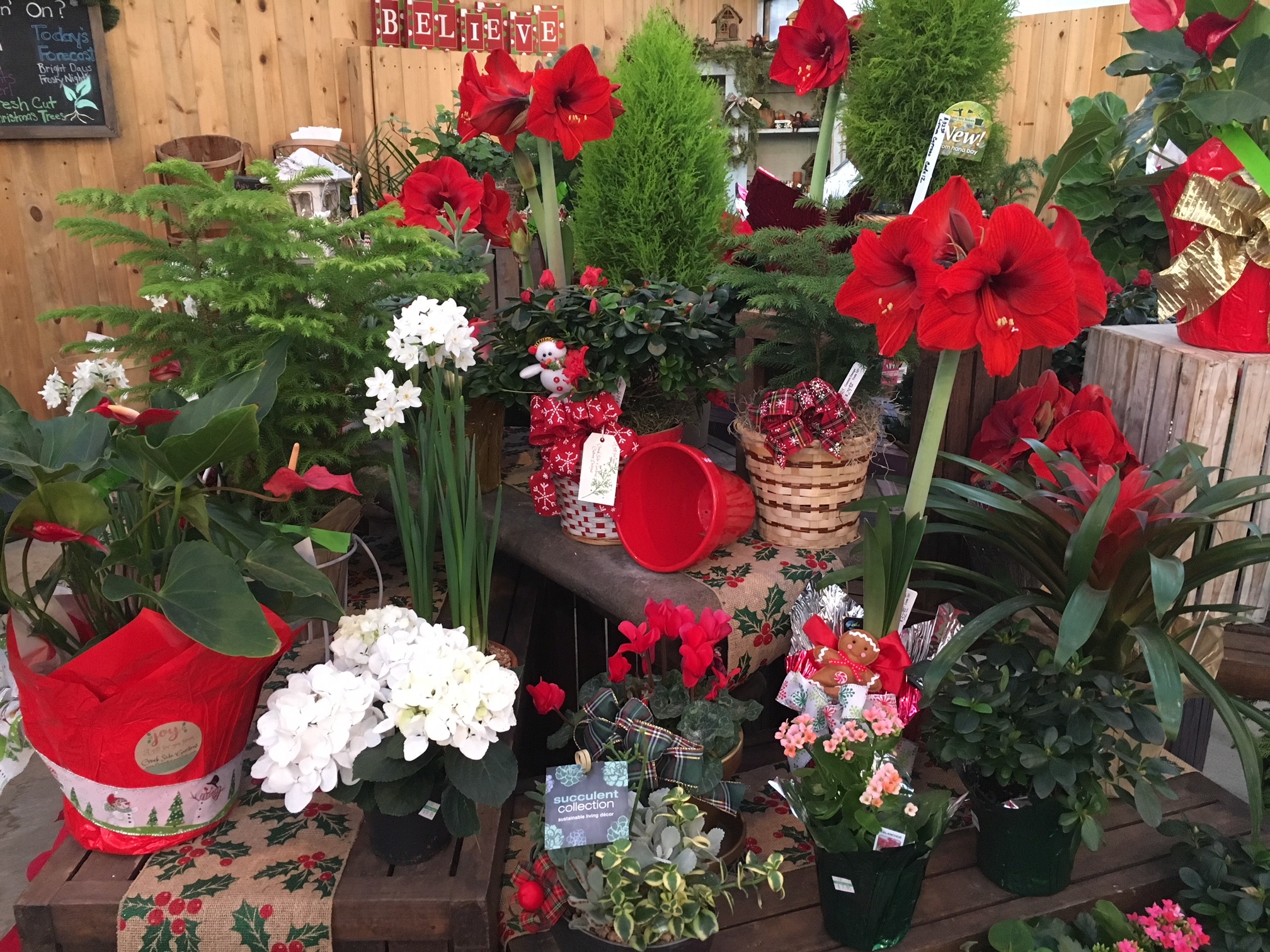Poinsettia
Select plants with colorful bracts covering the top of the plant. Leaves should be uniformly green with no lower leaves missing. Place plants anywhere in your home, will tolerate various light levels throughout the holidays. Keep soil moderately moist with a chance to dry out between applications. Water thoroughly whenever the soil feels dry to the touch and never allow the plant to stand in water for an extended period of time. Ideal temperatures are room temperature- 60F to 70F. Poinsettia plant parts are not edible, and they are not poisonous when eaten, but latex sap may cause irritations to the skin when handling poinsettias.
Christmas Cactus
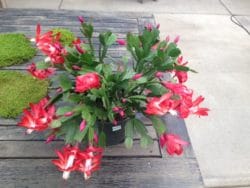 Prefers medium to bright light and typical room temperatures of 60F to 70F. Let the plant dry out slightly between waterings (soil should be rich and porous).
Prefers medium to bright light and typical room temperatures of 60F to 70F. Let the plant dry out slightly between waterings (soil should be rich and porous).
This tropical, jungle plant needs to be kept from cold windows and drafts. Remove old flowers as they dry up and pass to preserve a fresh appearance. May be grown year ’round and will flower again next fall. Read More Here
Amaryllis
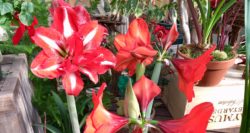 Indirect light is best. Excessive heat and bright light cause the blooms to wither prematurely. Water whenever the top 1″ of soil is dry-no more than once every 3 days. Water from the bottom or the top of the soil. Ideal temperatures are room temperature- 60F to 70F.
Indirect light is best. Excessive heat and bright light cause the blooms to wither prematurely. Water whenever the top 1″ of soil is dry-no more than once every 3 days. Water from the bottom or the top of the soil. Ideal temperatures are room temperature- 60F to 70F.
Place a support close to the bulb (do not pierce the bulb) to support the heavy flower stem as it
develops.
Azalea
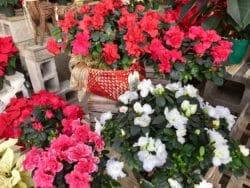 Azaleas as houseplants do best at cooler temperatures, ideally around 60-65 F. (16-18 C.). Cooler temperatures will also help the blooms last for several weeks. Keep them well lit, but out of direct sun. Managing moisture should be your greatest concern. Never allow your plant to dry out. Keep them damp, not soggy, and don’t fertilize until flowering is complete. At this point, the lives of most azaleas as houseplants are over.
Azaleas as houseplants do best at cooler temperatures, ideally around 60-65 F. (16-18 C.). Cooler temperatures will also help the blooms last for several weeks. Keep them well lit, but out of direct sun. Managing moisture should be your greatest concern. Never allow your plant to dry out. Keep them damp, not soggy, and don’t fertilize until flowering is complete. At this point, the lives of most azaleas as houseplants are over.
Anthurium
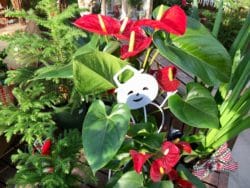 Anthurium flowers will last for several months with proper care. It grows best in bright, indirect light. Anthurium plants do not like continually moist soil. Only water your anthurium when the soil is dry to the touch. Care of anthurium plants does not require too much fertilizer. Proper care for anthuriums is not hard. Once you have the plant in the right soil and the right location, watering is simple. An anthurium growing in your garden or home will reward you with wonderful, long lasting flowers.
Anthurium flowers will last for several months with proper care. It grows best in bright, indirect light. Anthurium plants do not like continually moist soil. Only water your anthurium when the soil is dry to the touch. Care of anthurium plants does not require too much fertilizer. Proper care for anthuriums is not hard. Once you have the plant in the right soil and the right location, watering is simple. An anthurium growing in your garden or home will reward you with wonderful, long lasting flowers.
Cyclamen
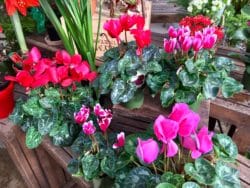 Cyclamen prefer a cool bright indirect light location in your home. Cool temperatures will help them bloom longer. Cyclamen are sensitive to both over and under watering. Water your cyclamen plant only when the soil is dry to the touch, but do not leave the plant in this dry state so long that it shows visible signs of not being watered, such as droopy leaves and flowers. When you water the plant, water from below the leaves so that the water does not touch the stems or leaves. Only fertilizer once every one to two months with water soluble fertilizer mixed at half strength.
Cyclamen prefer a cool bright indirect light location in your home. Cool temperatures will help them bloom longer. Cyclamen are sensitive to both over and under watering. Water your cyclamen plant only when the soil is dry to the touch, but do not leave the plant in this dry state so long that it shows visible signs of not being watered, such as droopy leaves and flowers. When you water the plant, water from below the leaves so that the water does not touch the stems or leaves. Only fertilizer once every one to two months with water soluble fertilizer mixed at half strength.
Lavender & Rosemary Trees
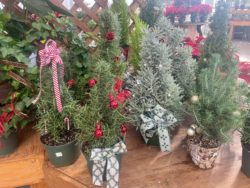 Lavender and Rosemary plants shaped like a Christmas tree are fun to decorate and display around the holiday season. Provide bright light conditions and keep well watered. Harvest for cooking or aromatics as you go. Available in 4″ or 6″ pot sizes.
Lavender and Rosemary plants shaped like a Christmas tree are fun to decorate and display around the holiday season. Provide bright light conditions and keep well watered. Harvest for cooking or aromatics as you go. Available in 4″ or 6″ pot sizes.
Norfolk Island Pine
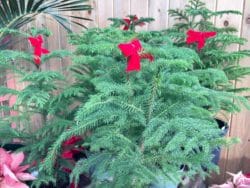 Norfolk Island Pines are a festive houseplant for the holiday season that evokes the look and feel of a Christmas Tree. They are not hardy outdoors. A Norfolk Pine does best in bright indirect light. Allow the soil to become dry to the touch in between watering’s. A nice houseplant all year around.
Norfolk Island Pines are a festive houseplant for the holiday season that evokes the look and feel of a Christmas Tree. They are not hardy outdoors. A Norfolk Pine does best in bright indirect light. Allow the soil to become dry to the touch in between watering’s. A nice houseplant all year around.
Kalanchoe
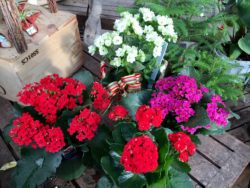 Kalanchoes are available in a variety of colors to be enjoyed in the home to be enjoyed for several weeks. This flowering succulent plant prefers bright indirect light and allow the soil to dry slightly between waterings.
Kalanchoes are available in a variety of colors to be enjoyed in the home to be enjoyed for several weeks. This flowering succulent plant prefers bright indirect light and allow the soil to dry slightly between waterings.
General rule of thumb for holiday plant care
Evenly moist (soil should feel like a squeezed out sponge) do not let plant stand in water, drain drip trays.
Keep plants from drafts, cold windows, and dry heat (room temperature range 60F – 70F is ideal).
Indirect light is light which streams through an east facing window or south/west window facing in the winter.
Fertilizing, (during winter months Nov-Feb) 1 time per month at half the normal rate noted on the
product. (i.e. Normal Rate for granular: 1 Tablespoon per gallon of water – convert to 1-1/2
teaspoons per gallon of water). Plants are in their dormant period and not producing much new
growth.

